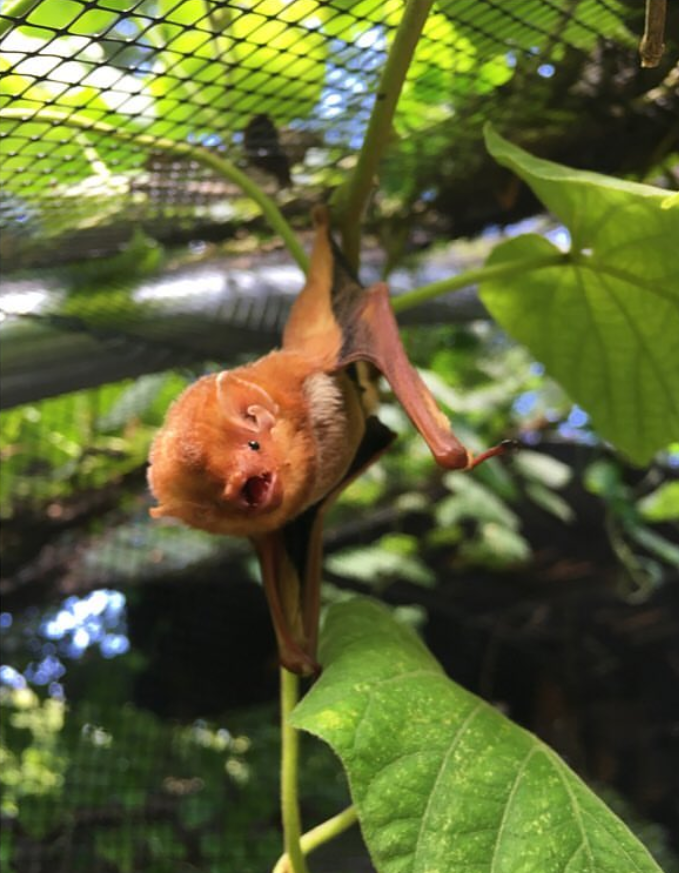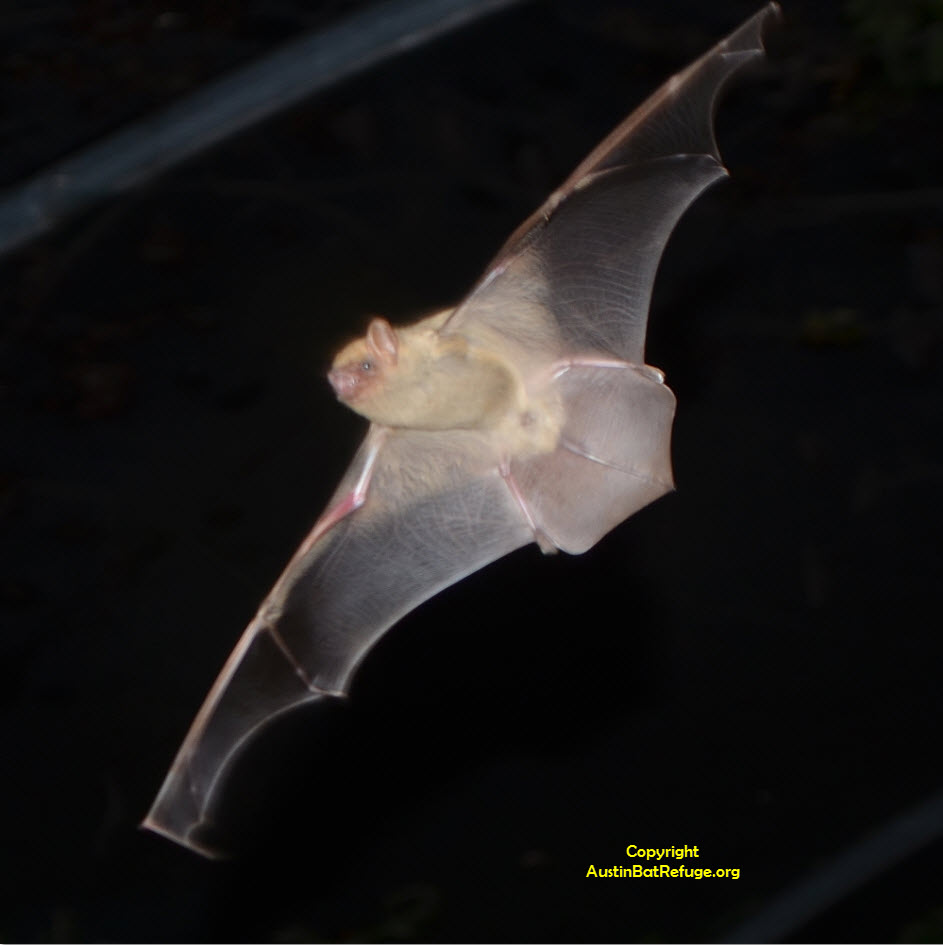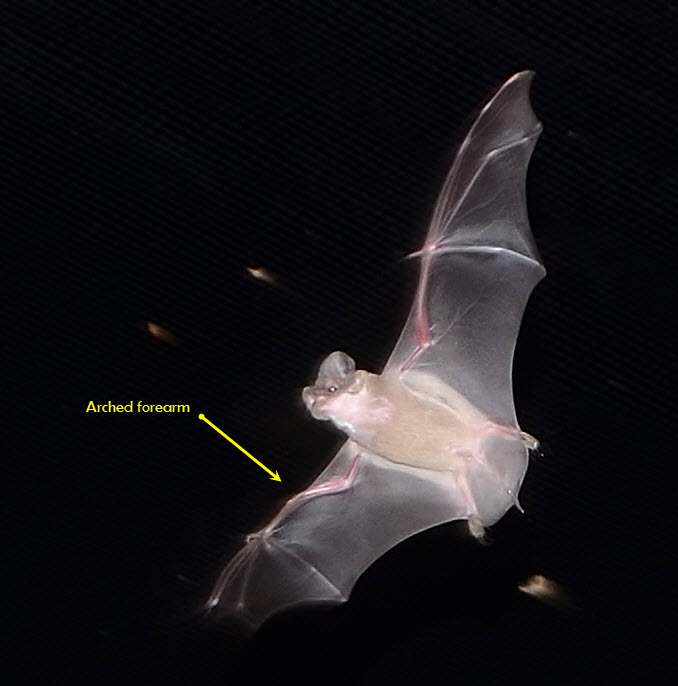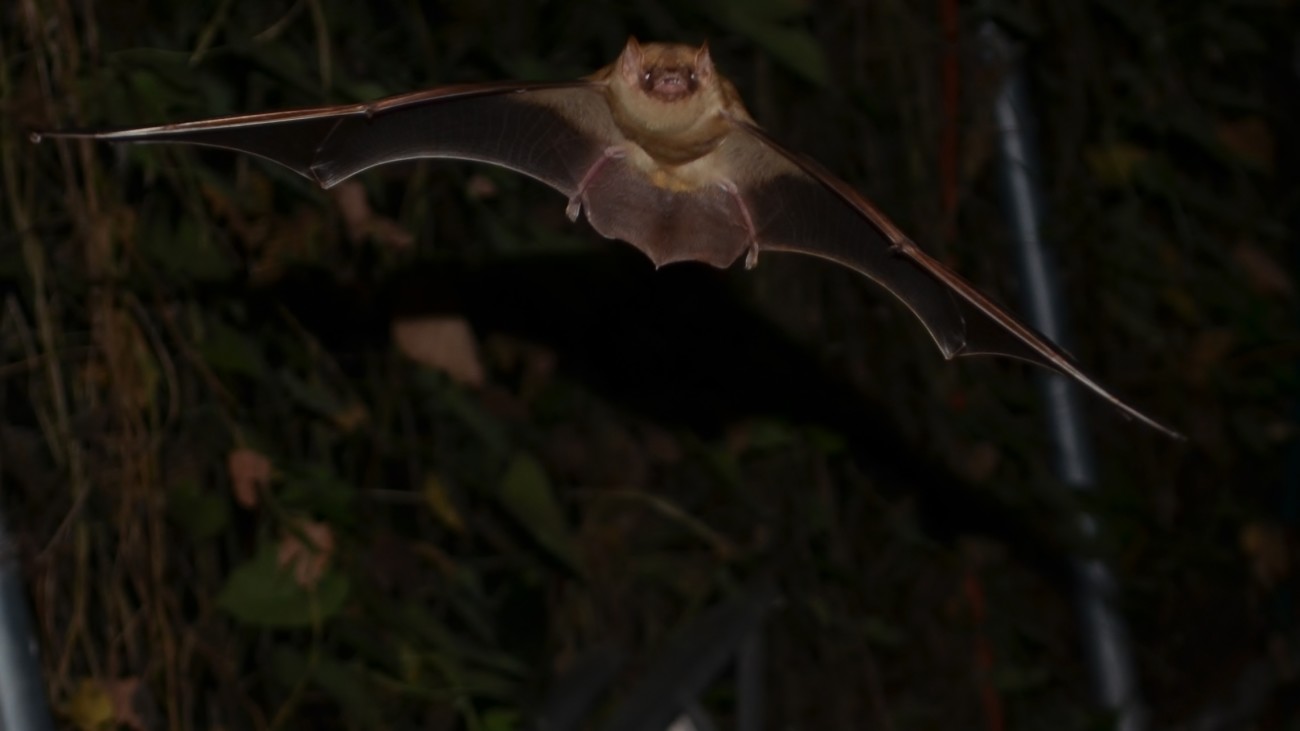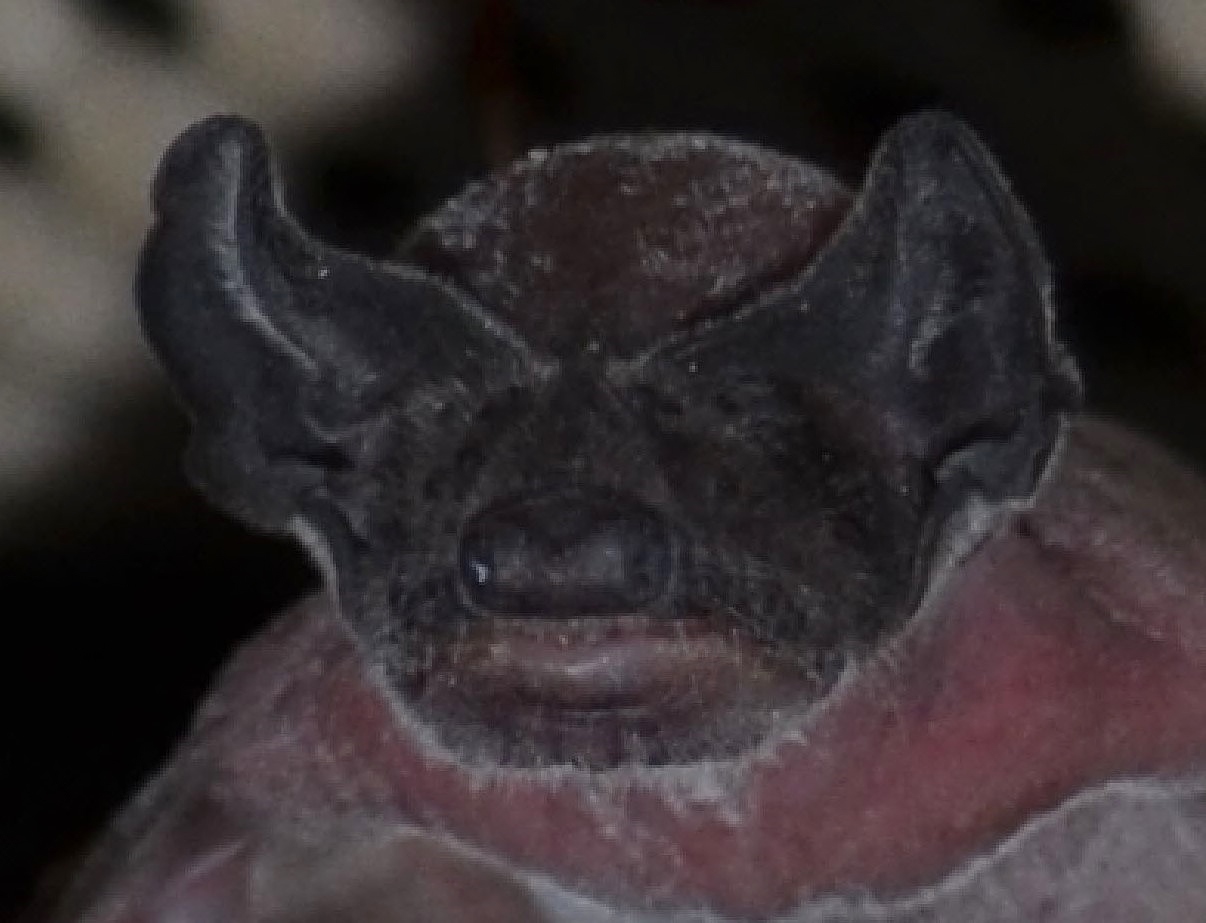Moth mystery
We’ve always wondered why every morning we find whole moths floating in the water of the drinking trough, in the bat garden. These are whole moths, not just the wings we would expect to find, when bats catch the moths, shuck the wings, and eat the rest.
So why so many whole, often live, moths in the water?




Here a Seminole bat controls a moth
Last night we finally got proof of what we suspected to be the reason.
We have a blacklight that attracts insects into the garden. It hangs from the center ridge of the aviary and is directly over the drinking pool. The pool is also situated in the center so that it collects the drips from the misters, which are also hung from the center ridge.
Our flight school bats fly in wide circles that are tangent to the light, so that they can catch any moth that happens to be flying at the wrong place at the wrong time. When they catch one, they curl up into a ball as they fly, to control the moth and bring it up to their mouths.
If one watches a moth circle under the light, within seconds a bat will zoom in and snatch the moth.
Last night we watched while evening bats did just that. 

But in between catches of fluttering moths, we noticed times where moths we were watching, just before a bat swooped in, would fold their wings and plummet downwards, splash-landing in the pool!
We have often heard of moths evolving defenses to counter the amazing bio-sonar the bats employ to hunt them. This arms race has been going on since bats developed echolocation around 25 million years ago, and has manifested in countless ways ever since. Some moth species have it hard-wired in their DNA that, upon hearing bat bio-sonar, their synapses fire in such a way that paralyzes their wings, causing them to plummet downward, away from the bats closing trajectory. This seems to work quite well, unless the moths just happen to be over our bat drinking trough!
So now we know why so many moths are found each morning in the pool! We just may move the light location so that these moths land in the garden instead, and rise once more to provide additional foraging opportunities for our bats as they hone their hunting skills. This will be a big benefit when we have a full house of bats in flight school, with not enough moths to go around.
We love these little insights that nightly observation provides in the aviary!

